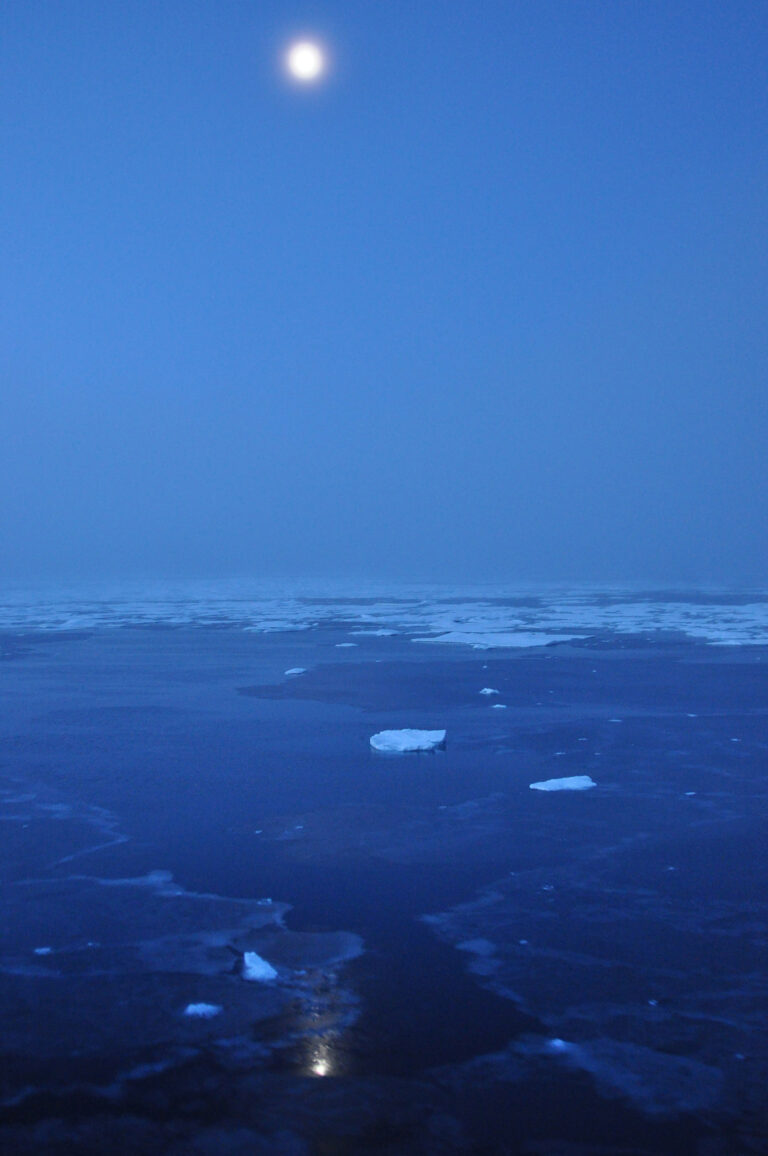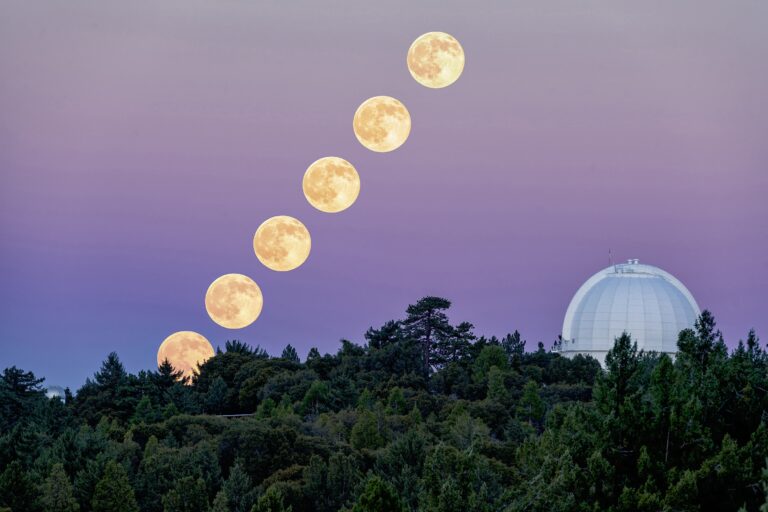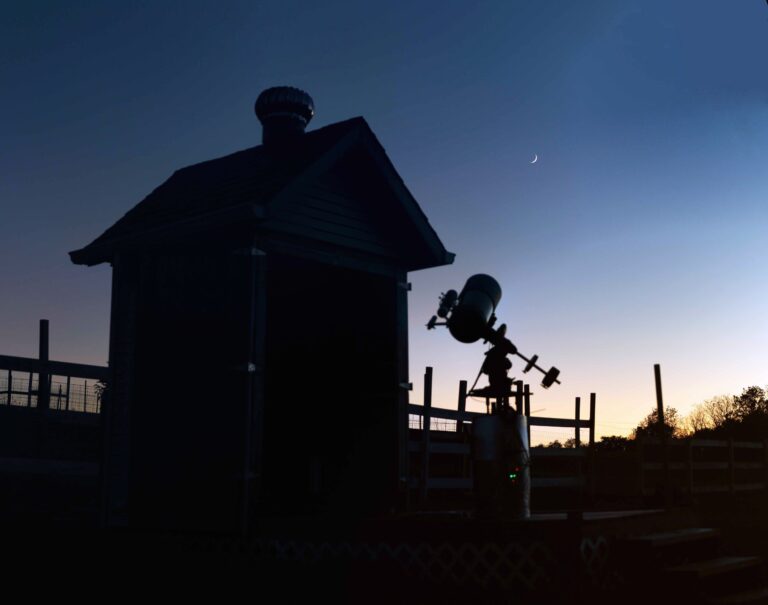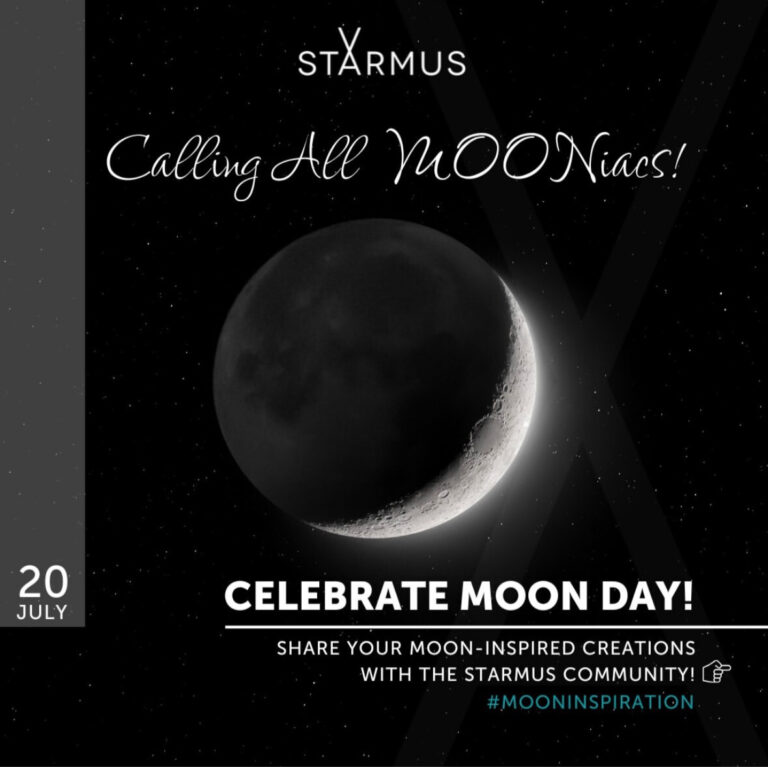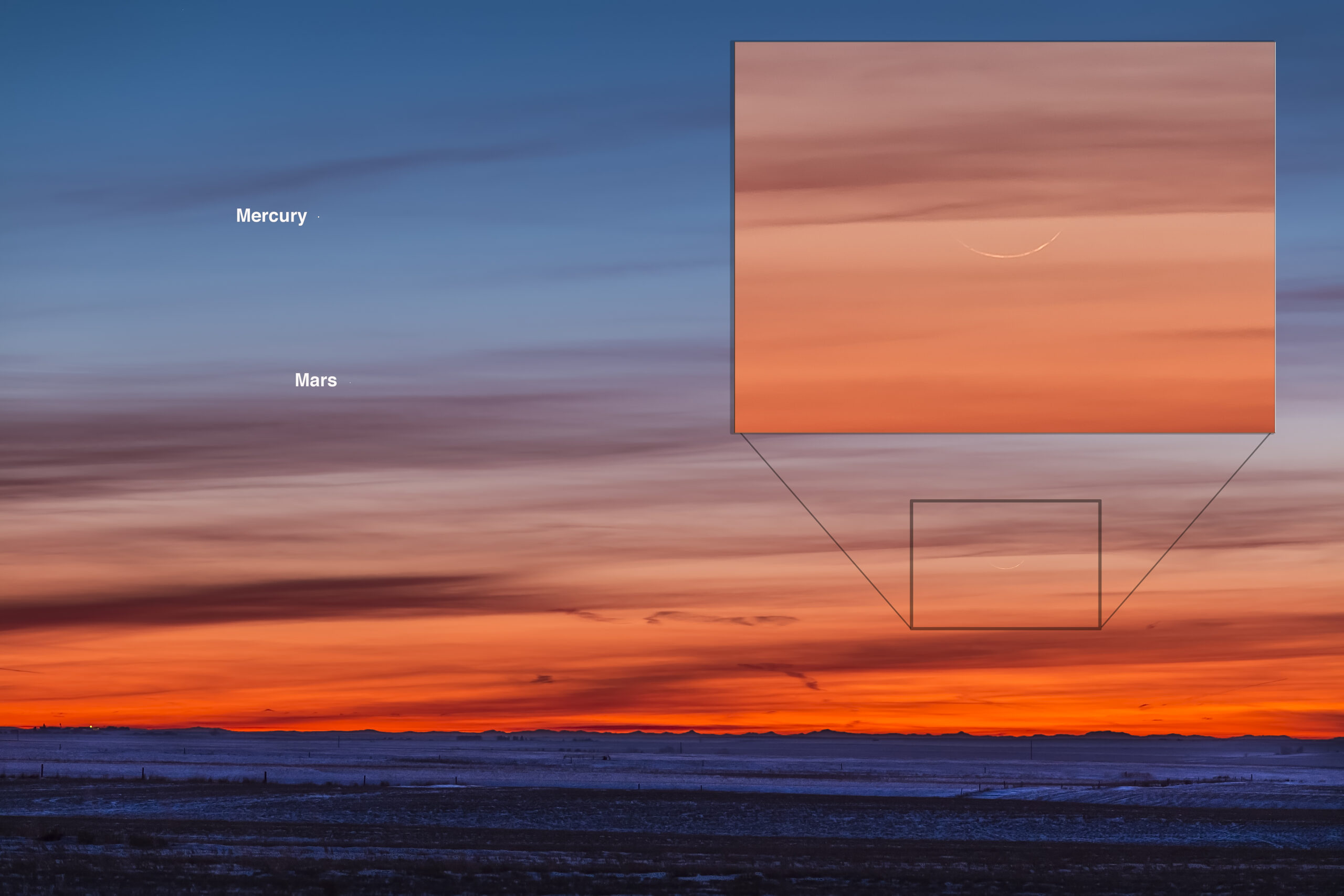
Key Takeaways:
- The New Moon is typically invisible from Earth as its illuminated side faces away, with the shadowed side blending into the bright daytime sky when it is positioned between Earth and the Sun.
- Conversely, the New Moon can be observed during a total solar eclipse, when it directly obstructs the Sun's light.
- Amateur astronomers can attempt to spot the "young Moon" (just after new) or "old Moon" (just before new), characterized by a very slim crescent visible shortly after sunset or before sunrise, respectively.
- Records for observing these young and old crescents, both visually and photographically, highlight extreme observational conditions, with some requiring optical aid to achieve.
Is the New Moon ever visible? If so, can it be seen without a telescope?
Esther Bock
Milwaukee, Wisconsin
The New Moon is typically invisible to the naked eye. It occurs when the Moon is positioned between Earth and the Sun, with its illuminated side facing away from us. As a result, the side we see is in full shadow, blending into the bright daytime sky and making it undetectable without specialized equipment.
In rare cases, however, the New Moon can be observed — though not in the way most expect. A notable example is during a total solar eclipse, when the Moon passes directly in front of the Sun and blocks its light. The Moon is in its New Moon phase during this event, so paradoxically, we see it only when it hides the Sun.
But outside of eclipses, the New Moon remains hidden due to its proximity to the Sun. Some amateur astronomers attempt to spot the Moon just before or after the New Moon. These are known as the “young Moon” (just after New) and the “old Moon” (just before New), when a slim crescent is briefly visible.
Mohsen G. Mirsaeed of Tehran, Iran, holds the world record for the youngest Moon ever seen with optical aid. On Sept. 7, 2002, he spotted a crescent just 11 hours and 40 minutes after New Moon using 40×150 binoculars from a mountain site.
The record for the youngest Moon photographed is held by Thierry Legault, who captured it 15 hours and 38 minutes after New on July 8, 2013.
Another record, by Stephen James O’Meara, involved visually spotting a crescent 15 hours and 32 minutes after New without optical aid.
Records are made to be broken. Can you do better?
In the Northern Hemisphere, the best time to hunt the young crescent Moon is in spring, just after sunset. The old crescent is best seen in late winter to early spring, just before sunrise.
Phil Harrington
Contributing Editor



